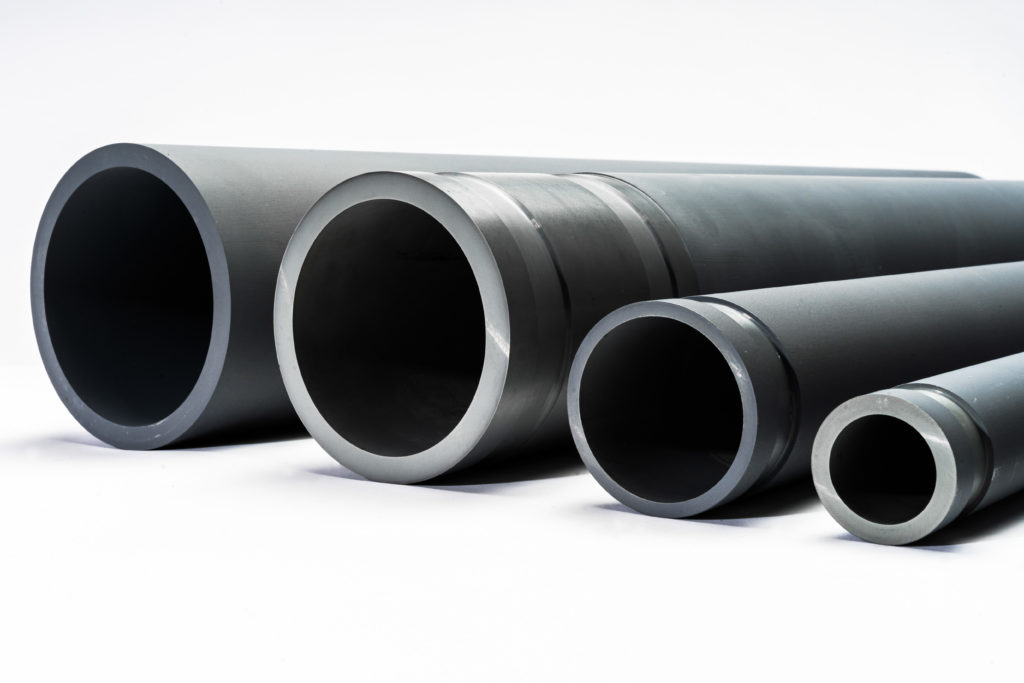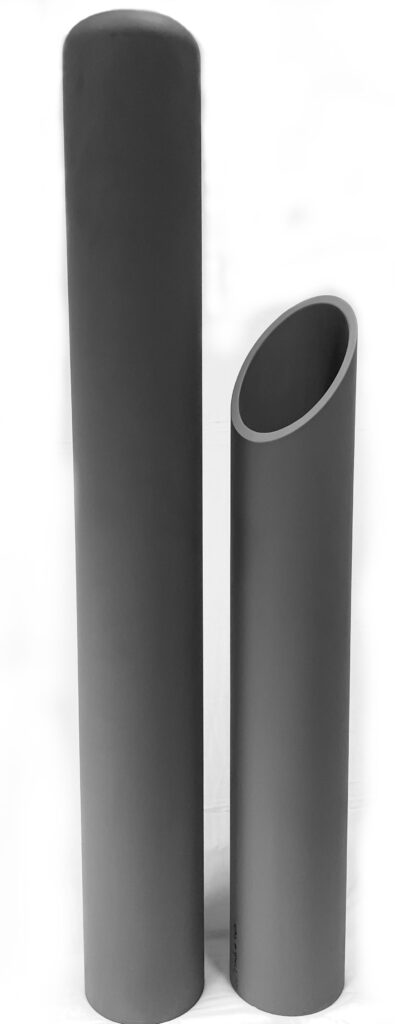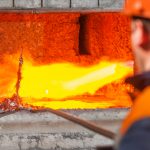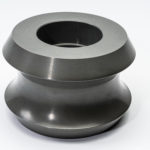A ceramic heater tube can be used in environments that require corrosion or abrasion resistant materials or need high temperature resistance. This makes them perfect for equipment used in temperature-specific industrial processes.
This article delves into the reasons for choosing ceramics over traditional materials. It focuses on their application in handling molten metals, ferrous molten metal handling, and other high-temperature industrial processes.
Exceptional High-Temperature Performance
Ceramic materials, like silicon nitride (Si3N4) and silicon carbide (SiC), are good at conducting heat. This characteristic is crucial for processes like metal forming and cast iron handling, where high temperatures are a constant.
Evidence of temperature resistance
A study demonstrated that oxide ceramic tubes could withstand extreme high temperatures when heated using electrical immersion heaters. They reached a temperature of 1250°C. ¹

Robust Wear and Corrosion Resistance
The wear resistance of ceramic materials is a significant advantage, especially in environments with abrasive materials. Ceramic heat pipes designed for high-temperature power-engineering applications demonstrate exceptional resistance to wear and corrosion, even under highly abrasive and corrosive atmospheres. ² This durability extends the life of immersion heater tubes. By using a ceramic riser tube, you can reduce replacement costs and downtime.
Advanced Thermal Shock Resistance and Chemical Stability
Thermal shock resistance and chemical stability are vital in environments with rapid temperature changes or aggressive chemicals. The design and manufacture of ceramic heat pipes, that use materials like Si3N4 and SiC, have shown remarkable resistance to thermal shocks and chemical degradation. ³ This makes them ideal for processes involving rapid heating and cooling cycles, such as in thermocouple protection sheaths.
Moving forward with Ceramic Tube Design and Manufacturing
Advanced ceramic tube designs and manufacturing processes have increased their versatility. They can now be used in many different capacities.
For example, a ceramic heat exchanger that uses a fluidized bed for heated gas generation can be found in coal-fired gas turbines. These have ceramic tubes to enable the heat transfer, thus demonstrating the strong performance of ceramic tubes in general. ³
Additional evidence of the advancement of ceramic tube design is through lithography-based ceramic manufacturing. They make tube-in-tube heat exchangers with integrated microstructures that can enhance the heat transfer capabilities of the tube.⁴

Which Materials Should I Use for a Ceramic Heater Tube?
The best materials to make a ceramic heater tube out of are Si3N4 and SiC because they:
- Have superior properties that can provide excellent thermal conductivity
- Can resist temperature and shock
- Are strong against wear and corrosion.
Their robust properties are sustainable in high-temperature environments and they can resist degradation if they come into contact with molten metals. This makes them ideal for use in ferrous molten metal handling and metalworking.
An alternative to consider instead of Si3N4 is sialon (Si-Al-O-N). It is the aluminum-silicon-oxynitride alloy version of Si3N4. This material has been carefully produced with the following high quality physical properties:
- Extremely resistant to corrosion and wear
- Good resistance to thermal shock
- Very robust and hard
- High density, which can be increased through sintering
- A minimum amount of vapor pressure that can lower the risk of decomposition in heated environments.
These properties can ultimately benefit your ceramic heater tubes to ensure your equipment is optimized for use.
Utilize the Benefits of a Ceramic Heater Tube
Ceramic heater tubes come with many different advantages. These include high-temperature performance, wear, corrosion and thermal shock resistance and chemical stability.
We would like to invite you to consider our collection of ceramic heater and ceramic riser tubes. Our products embody the latest in ceramic technology. With their innovative design and manufacturing techniques, they will suit wide ranges of challenging industrial environments.
References
- Matthies J, Nieken U, Pritzkow W, Schall T, Tuttlies U. Electrically Heated Oxide Ceramic Tubes for High Temperature Reactions. Chemie Ingenieur Technik. 2021;95(5):701-707. doi:10.1002/cite.202200186.
- Kumada M. A Study on the High Performance Ceramic Heat Exchange for Ultra High Temperatures. In: Kakaç S, Bergles A.E, Mayinger F, Yüncü H. Heat Transfer Enhancement of Heat Exchangers. 355. Nato ASl Series. Springer Dordrecht; 1999. https://link.springer.com/chapter/10.1007/978-94-015-9159-1_16. Accessed 10th January 2024.
- Hurtado A, Jobst M, Lippmann W, Meisel P. Design and manufacture of ceramic heat pipes for high temperature applications. Applied Thermal Engineering. 2015;75: 692-699. doi:10.1016/j.applthermaleng.2014.10.051.
- Brander J, Bucharsky E, Hurtado A, Korvink J, Loeffler F, Nestle N, Schell K, Schreyer H, Thompson E. Design, Manufacturing, and Numerical Simulation of a Tube-in-tube High temperature Heat Exchanger with Microstructures to Enhance Heat Transfer. 2021;86. 1195-1200. doi: 10.3303/CET2186200.



